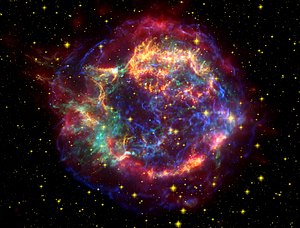Get the latest Science News and Discoveries
JWST unveils stunning ejecta and CO structures in Cassiopeia A's young supernova - EurekAlert
The SETI Institute announced the latest findings from the James Webb Space Telescope (JWST) of the supernova remnant, Cassiopeia A (Cas A). These observations of the youngest known core collapse supernova in the Milky Way provide insights into the conditions that lead to the formation and destruction of molecules and dust within supernova ejecta. The study’s findings change our understanding of dust formation in the early universe in the galaxies detected by JWST 300 million years after the Big Bang. Researchers consider supernovae, such as those that formed Cas A, vital sources of the dust seen in distant, high-redshift galaxies. These new insights challenge beliefs that dust primarily originated from intermediate-mass stars on the asymptotic giant branch (AGB) in present-day galaxies. “It is remarkable to see how bright the carbon monoxide emission detected in JWST NIR imaging and spectroscopy, showing a few tens of sinusoidal patterns of CO fundamental rovibrational lines,” said Dr. Jeohghee Rho, research scientist at the SETI Institute who led this research. “The patterns look like they were artificially generated.”
None
Or read this on Eureka Alert
